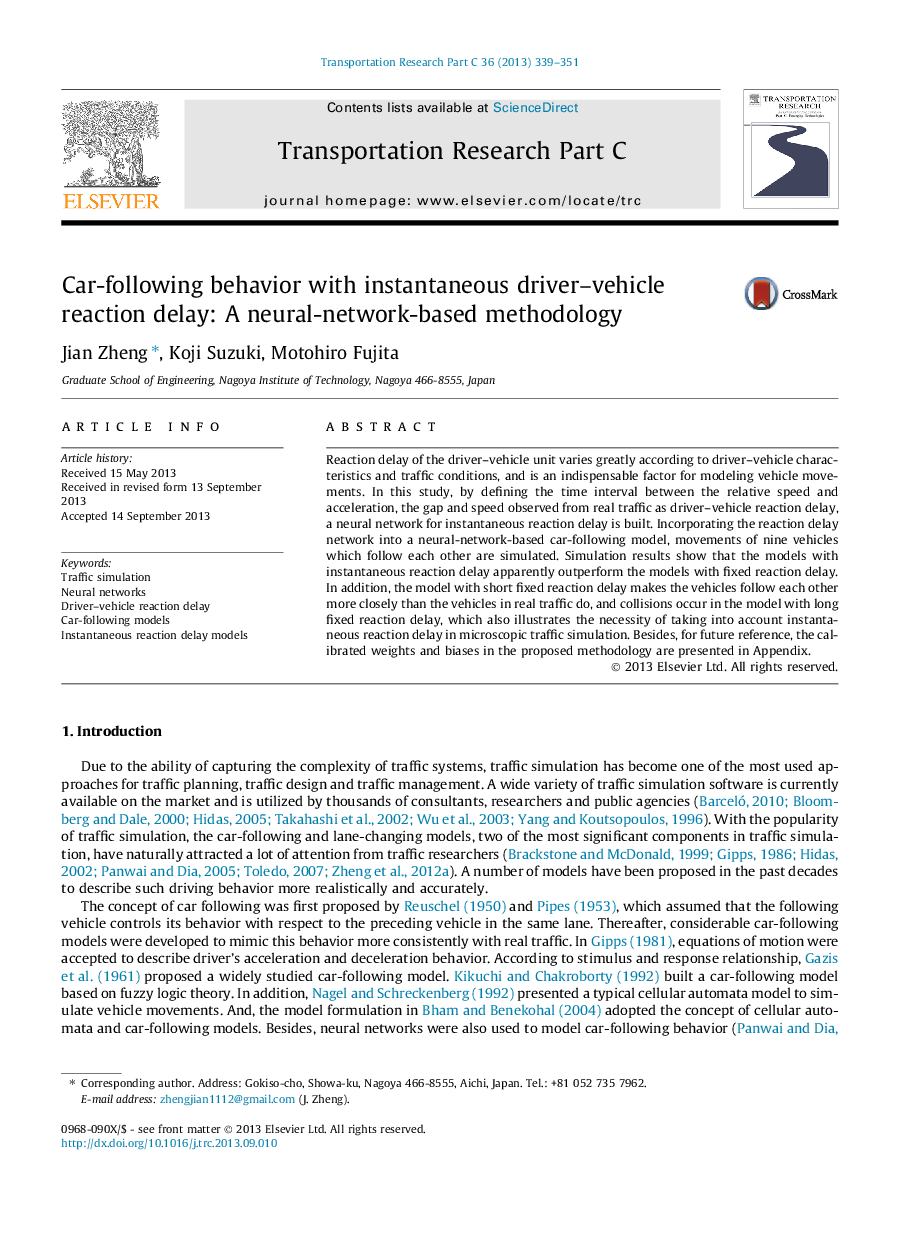| Article ID | Journal | Published Year | Pages | File Type |
|---|---|---|---|---|
| 6937288 | Transportation Research Part C: Emerging Technologies | 2013 | 13 Pages |
Abstract
Reaction delay of the driver-vehicle unit varies greatly according to driver-vehicle characteristics and traffic conditions, and is an indispensable factor for modeling vehicle movements. In this study, by defining the time interval between the relative speed and acceleration, the gap and speed observed from real traffic as driver-vehicle reaction delay, a neural network for instantaneous reaction delay is built. Incorporating the reaction delay network into a neural-network-based car-following model, movements of nine vehicles which follow each other are simulated. Simulation results show that the models with instantaneous reaction delay apparently outperform the models with fixed reaction delay. In addition, the model with short fixed reaction delay makes the vehicles follow each other more closely than the vehicles in real traffic do, and collisions occur in the model with long fixed reaction delay, which also illustrates the necessity of taking into account instantaneous reaction delay in microscopic traffic simulation. Besides, for future reference, the calibrated weights and biases in the proposed methodology are presented in Appendix.
Related Topics
Physical Sciences and Engineering
Computer Science
Computer Science Applications
Authors
Jian Zheng, Koji Suzuki, Motohiro Fujita,
